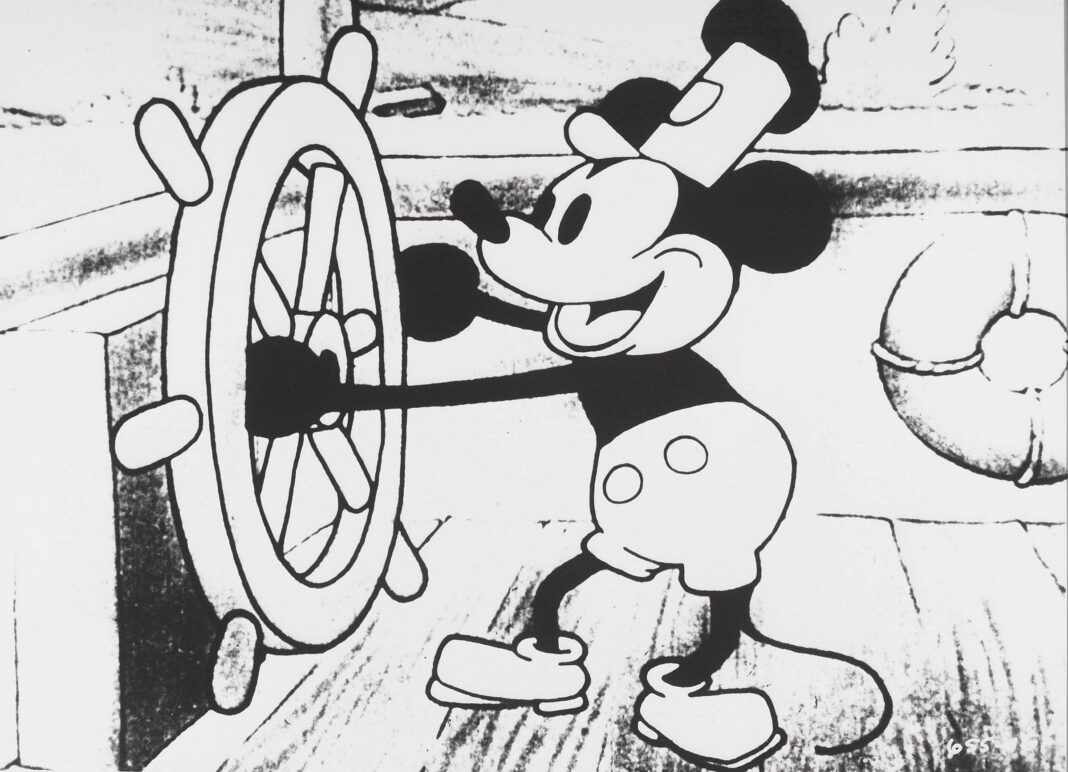On January 1, Mike Neville gave Midjourney the following prompt: “Steamboat Willie drawn in a vintage Disney style, black and white. He is dripping all over with white gel. ” There’s no polite way to describe what this prompt conjured from the AI image generator.
It looks, very much, like Mickey Mouse is drenched in ejaculate. Will Bedingfield Kate Knibbs Kate Knibbs At the start of every year, a crop of cultural works enters the public domain in the United States. When copyright expires on particularly beloved characters, people get excited.
This is an especially eagerly anticipated year. An early version of Mickey Mouse, colloquially known as Steamboat Willie, entered public domain in 2024 after nearly a century of rigorously enforced copyright protection. Within days, an explosion of homebrewed Steamboat Willie art hit the internet, including a horror movie trailer , a meme coin —and, of course, a glut of AI-generated Willies.
Some are G-rated. Others, like “Creamboat Willie,” are decidedly not. (Willie doing drugs is another popular theme.
) While a contingent of the people sharing naughty Willie images are simply goofing around, others had surprisingly sober-minded intentions. Neville, who posted his image on social media using the handle “Olivia Mutant-John,” has a lively sense of humor, but his experiment wasn’t solely a scatalogical joke. “My interest in generating the assets was to explore copyright thresholds and where the tools are currently,” he says.
He’d noticed that it was easy to find examples of copyrighted characters on popular image-generating tools (a point also recently made by AI scientist Gary Marcus, who posted AI-generated depictions of SpongeBob SquarePants as an example) and wanted to see how far he could push an image generator now that Steamboat Willie was in the public domain. Neville isn’t the only person conducting AI Willie experiments with copyright on his mind. Pierre-Carl Langlais, head of research at the AI data research firm OpSci, created a fine-tuned version of Stable Diffusion he called “ Mickey-1928 ” based on 96 public domain stills of Mickey Mouse from the 1928 films Steamboat Willie , Plane Crazy , and Gallopin’ Gaucho .
“It’s a political stance,” he says. Langlais firmly believes that people should be paying closer attention to where AI tools get their training data; he’s working on several separate projects focused on creating models that train exclusively on public domain works to that end. He whipped it up in hours, because it’s essentially a filter laid atop of Stable Diffusion, not a totally custom data set.
(That would be a far more labor-intensive project. ) As anything related to AI artwork tends to stir up controversy, he’s been pleasantly surprised by the joyful reception his tool has received online; because it is built on a tiny set of low-quality images, the works it creates tend toward the rough-hewn and glitchy. (“You should not expect consistently good results from Mickey-1928,” his project description warns.
) Langlais originally intended to add to the data set to improve its quality, but now he’s going to leave it as is. “I think people liked that it was slightly bad,” he says. “It created some funny results.
” Others liked it precisely because of its political valence. “It’s pretty satirical,” says emerging technology researcher Eryk Salvaggio. The Steamboat Willie iteration of Mickey Mouse entering the public domain is a big deal partly because people love all things Disney, but also because Disney played a role in shaping contemporary copyright protections specifically to shield this character.
As Salvaggio points out, people nicknamed the Copyright Term Extension Act of 1998—which, as its name suggests, extended copyright terms—as the “Mickey Mouse Protection Act,” because Disney lobbied aggressively in favor of prolonging copyright . “This particular Mickey Mouse, from Steamboat Willie , is now in the public domain at a time when questions about what we can grab and use are up for debate,” Salvaggio says. “It’s an interesting confluence.
” At least some of the AI-generated Steamboat Willie images are explicit middle-fingers to Disney. On the social network Bluesky, for example, a user called Virtual Balboa posted an image of Willie smoking a joint . (They asked to be identified by their pseudonym so their family “doesn’t get swatted by some random lunatic.
”) In an email, they detailed their motivations for creating doobie-smoking Willie. “I love the idea that Disney will be forced to spend money and resources looking at my stupid pictures to check if they are too far removed from Steamboat Willie to count as public domain,” they wrote. While people like Langlais and Neville are experimenting with Steamboat Willie in part to test the guardrails put in place by generative AI companies, Virtual Balboa is deeply skeptical that enhanced copyright protections will benefit regular people: “Any guardrail-type laws will be written by computer-illiterate geriatrics and only make life harder for people trying to use ‘ethical AI’ to do legitimate work.
” Putting aside considerations of how digitally savvy regulators may or may not be, the rush to remix Steamboat Willie with AI tools demonstrates, once again, the growing inescapability of these products. .
From: wired
URL: https://www.wired.com/story/mickey-mouse-steamboat-willie-public-domain-artificial-intelligence/



